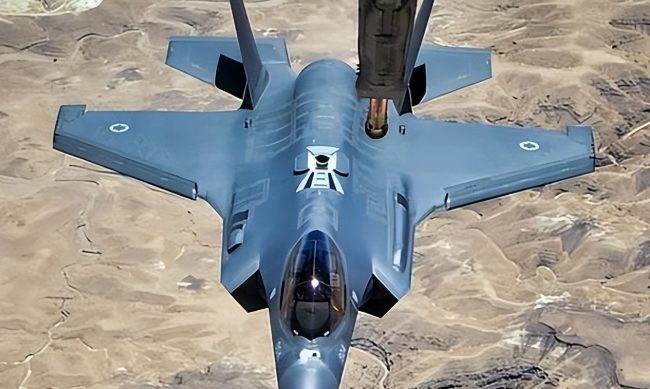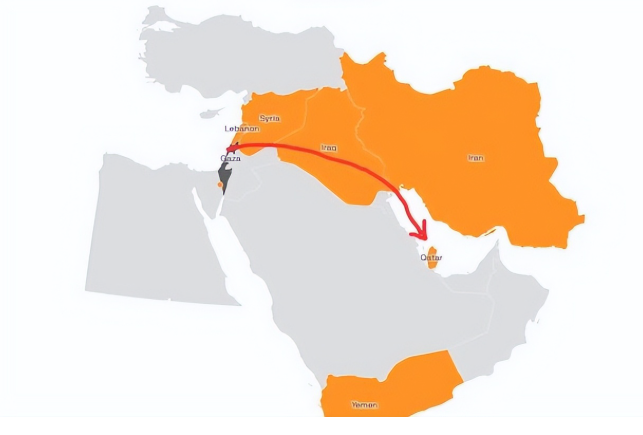The Middle East just became more turbulent after Israel’s latest strike on Qatar. On September 9, 2025, the Israeli Air Force launched an unexpected attack on a building north of Doha, targeting senior Hamas figures.
Qatar’s Prime Minister Mohammed bin Abdulrahman Al Thani admitted the next day that their radar systems failed to detect the Israeli aircraft or missiles. This statement triggered heated debate online, particularly among Chinese military enthusiasts, who had long speculated about such scenarios.
The Strike on Doha
According to reports, Israel dispatched 15 fighter jets from its home bases, flying over 2,000 kilometers—likely through Syrian and Iraqi airspace—before entering the Gulf.

During the strike, 10 precision-guided missiles hit a three-story villa, killing five people, including the son of Hamas leader Khalil al-Hayya. Israel later confirmed the attack, with Prime Minister Benjamin Netanyahu’s office saying it was intended to cripple Hamas leadership.
Why Qatar’s Defenses Failed
Qatar’s advanced defense systems, including THAAD interceptors and 11 Patriot PAC-3 batteries, should have provided comprehensive coverage for its small territory. The systems are supported by phased-array radars capable of detecting threats from up to 470 km away.
Moreover, the strike site was only 30 km from Al Udeid Air Base, the largest U.S. facility in the Middle East, which also hosts similar radar and defense systems.
Yet during the attack, Qatar’s radar screens showed nothing. The Prime Minister emphasized this was not a technical malfunction but the result of Israel deploying advanced stealth and electronic warfare technologies.

Israel’s Likely Use of F-35I “Adir”
Analysts believe Israel employed its customized F-35I “Adir” stealth fighters, supported by F-15 escorts.
- The F-35’s stealth coating and airframe reduce radar reflections, making it nearly invisible.
- The jets likely launched stand-off precision missiles such as the Delilah from outside Qatari airspace, keeping exposure minimal.
- Patriot systems are optimized for ballistic and cruise missiles, not stealth fighters, and may have been operating at peacetime alert levels.
This combination explains why Qatar’s systems—despite their sophistication—failed to intercept the attack.
The U.S. Role: Awkward Silence
The situation is awkward for Washington. Reports suggest U.S. radars at Al Udeid tracked Israeli jets heading east but informed Qatar only 10 minutes before impact.
The U.S. government later expressed displeasure, with the Trump administration warning Israel not to repeat such unilateral actions, while also pledging to deepen defense cooperation with Qatar.
Speculation has arisen that U.S. systems may have been deliberately adjusted to “blind” Qatar to Israeli aircraft—though no concrete evidence supports this claim. Still, the incident underscores the uncomfortable triangle among Israel, Qatar, and the U.S.

International Fallout
The UN Security Council held an emergency meeting on September 11, condemning violations of Qatar’s sovereignty without directly naming Israel.
- China condemned Israel’s cross-border strike, emphasizing international law and peaceful mediation.
- Arab League and the Organization of Islamic Cooperation issued collective statements denouncing Israel.
- Turkey and Iran voiced strong criticism, while European powers such as Germany, France, and the UK expressed concern over the blow to Gaza ceasefire talks.
Chinese Military Enthusiasts Claim Vindication
In China’s vibrant online defense forums, enthusiasts quickly pointed out that they had long predicted such outcomes.
- Many argue U.S.-supplied defense systems could contain “backdoors”, limiting effectiveness against allies like Israel.
- They note the “American spear versus American shield” paradox: Israel’s F-35s versus U.S.-made Patriot and THAAD in Qatar.
- Discussions highlighted how stealth fighters, combined with stand-off missiles and electronic warfare, easily challenge traditional air defenses.
Online comments summed it up: “Chinese military fans called it right—stealth jets expose the limits of conventional radar and U.S. defense exports.”
References
- Qatar Prime Minister’s Press Conference (Sept 10, 2025)
- Israel Defense Forces official statement (Sept 9, 2025)
- U.S. Department of Defense briefing (Sept 10, 2025)
- UN Security Council Emergency Meeting Records (Sept 11, 2025)



